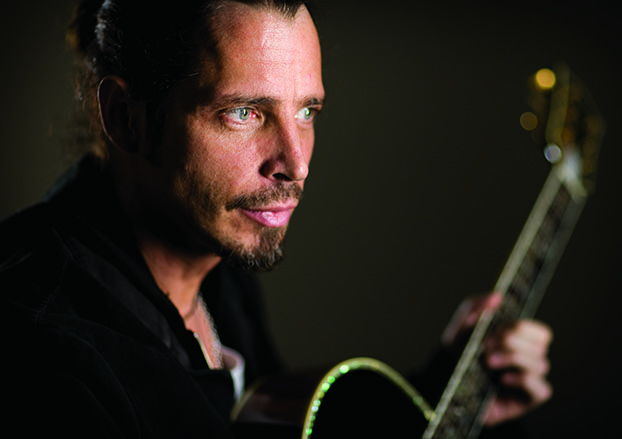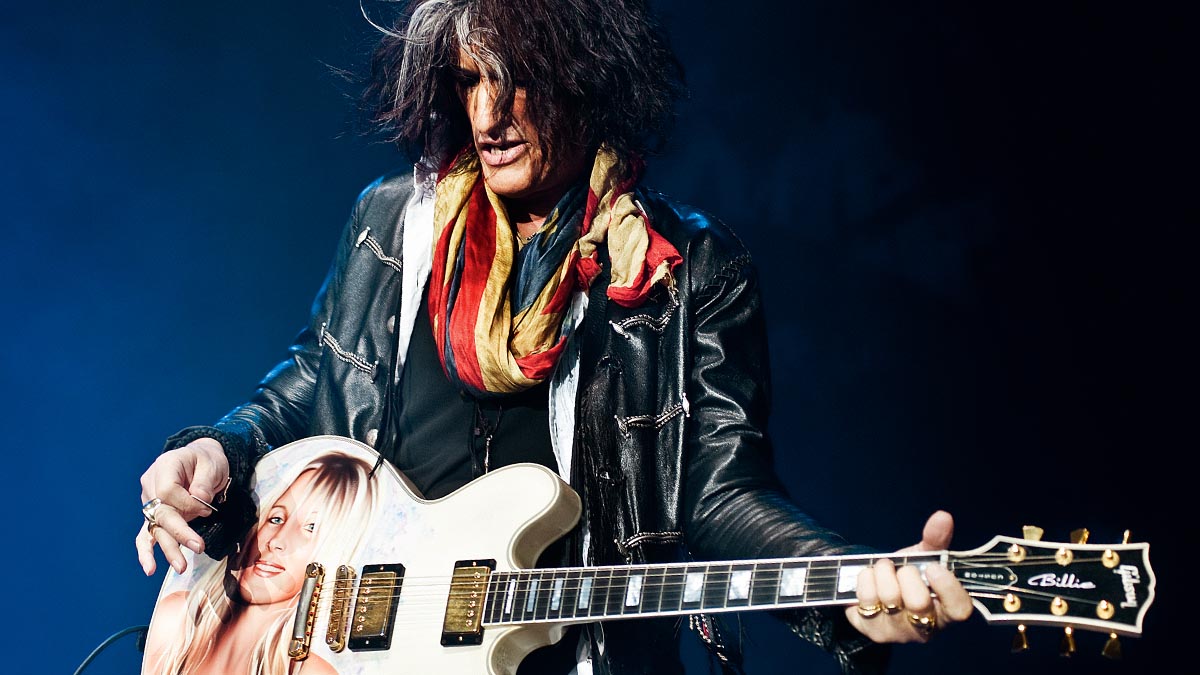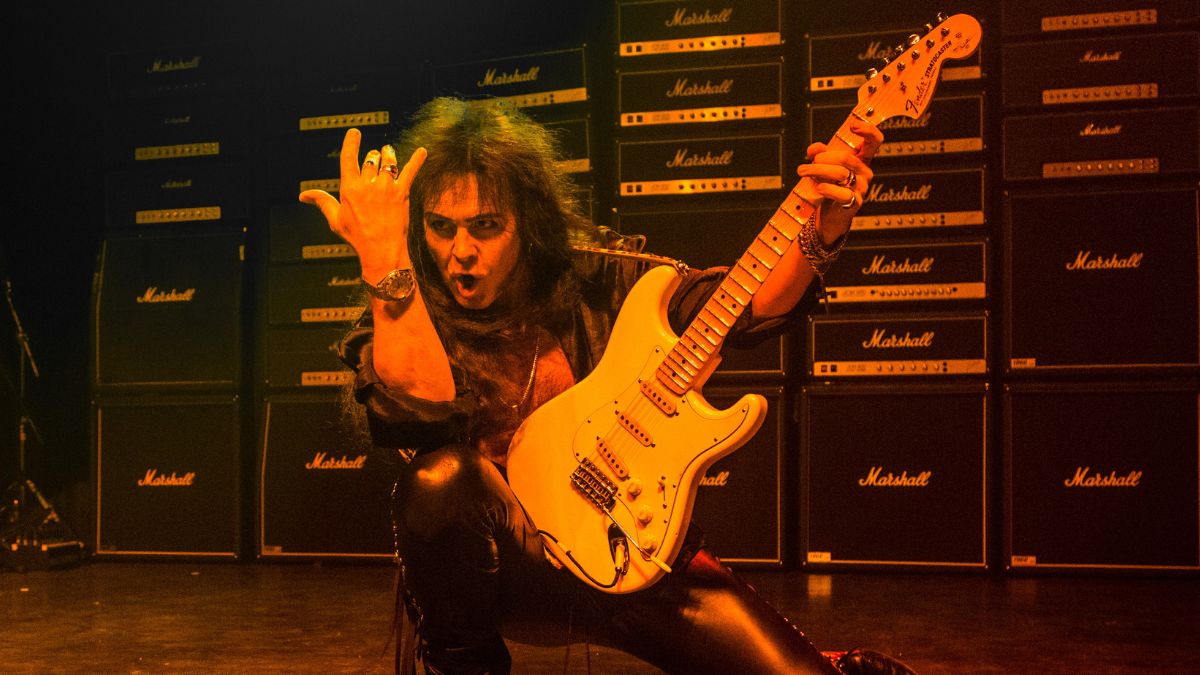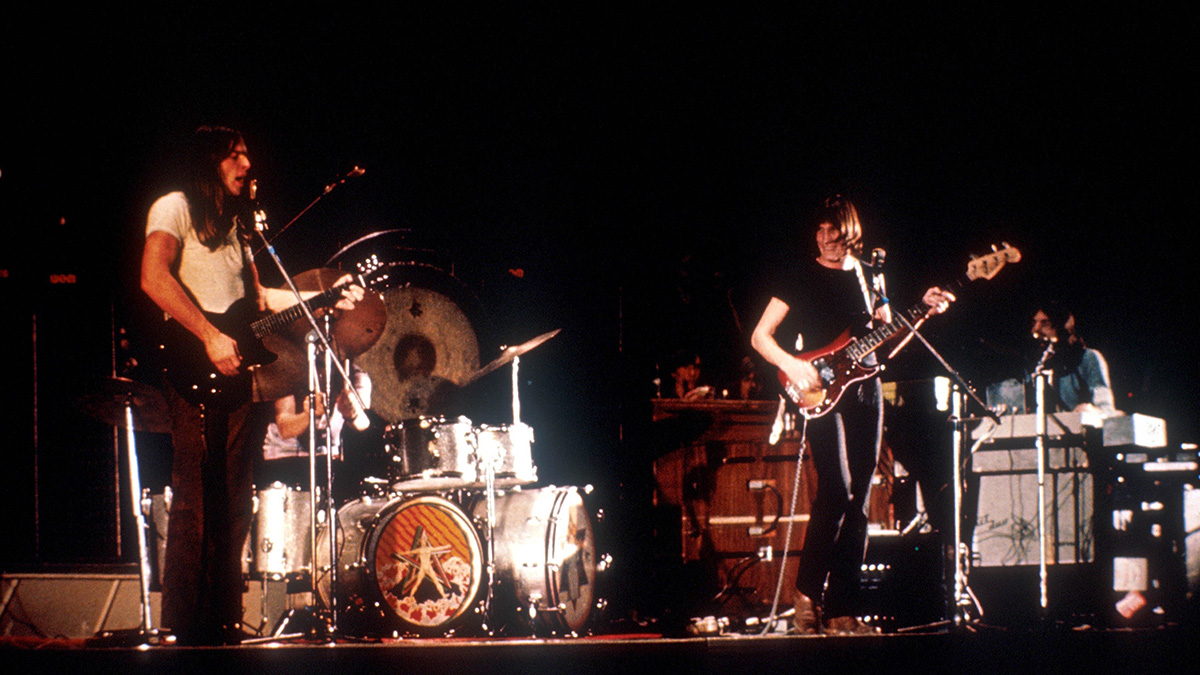Chris Cornell 1964-2017: Paying Tribute to the Legendary Soundgarden Frontman

We will never know what went on in the mind of Chris Cornell after he left the Detroit Fox Theater on the night of May 17. He’d just played a well-received show with his iconic grunge-era band, Soundgarden. But just a few hours later, he was found dead on the bathroom floor in his room at the MGM Grand Detroit hotel. A coroner later ruled his death a suicide by hanging.
Cornell’s passing, at age 52, was all the more shocking for its unexpectedness. Accounts of that final show vary. Some witnesses say Cornell appeared to be in good spirits. Others sensed that something was off. But then, hindsight is always 20/20.
Cornell possessed one of the most distinctive voices in rock music—powerful enough to cut through the thickest wall of grunge guitar squall, yet subtly expressive, dappled with a broad spectrum of emotional colors. A prolific songwriter as well, his down-tuned dolor and jagged rhythmic sensibilities did much to set the tone and pace for American rock in the Nineties.
Ultimately, though, an artist’s songs and performances give us only a partial insight, at best, into his heart and mind. Reclusive and even agoraphobic at times, Cornell suffered from periods of depression as well as alcohol and drug-related issues. But he’d put some of that behind him when he became sober in 2002.
“He was a complex and gentle soul,” Cornell’s fellow Nineties rock icon Perry Farrell tweeted after the news of the singer’s death went public. Smashing Pumpkins drummer Jimmy Chamberlin paid tribute to Cornell’s substantial contribution to rock music, calling him “Truly one of the greatest singers of our generation, and a kind soul.”
Cornell was a key figure in the emergence of the Seattle grunge sound that became the predominant force in guitar-driven rock music of the Nineties.
Seattle is also where he was born, on July 20, 1964, and where he grew up as part of a large, Catholic family.
Get The Pick Newsletter
All the latest guitar news, interviews, lessons, reviews, deals and more, direct to your inbox!
“It was lower-middle-class white,” he later said. “At the time I was growing up, it was the tail-end of the baby boom, so there were tons of kids in the neighborhood. Tons of boys, young and old. So there were tons of drugs—the definitive Seattle neighborhood. I went from being a daily drug user at 13 to having bad drug experiences and quitting drugs by the time I was 14, and then not having any friends until the time I was 16. There was about two years where I was more or less agoraphobic and didn’t deal with anybody, didn’t talk to anybody, didn’t have any friends at all. All the friends that I had were still fucked up with drugs and were people that I didn’t really have anything in common with.”
Music is what pulled Cornell out of seclusion. He started out as a drummer, playing in cover bands the Jones Street Band and the Shemps. The latter group would later morph into Soundgarden, originally consisting of Cornell, guitarist Kim Thayil and bassist Hiro Yamamoto. Forming in 1984, Soundgarden would become one of the first bands later associated with the grunge scene in Seattle.
Early in his musical evolution Cornell discovered the power of his formidable multi-octave vocal range. “The first band I was ever in, I sang lead vocals behind the drums,” he recalled, “and I would get good reactions. And I started thinking, Shit, maybe I should just try this.”
In 1985, Soundgarden brought drummer Scott Sundquist into the fold, allowing Cornell to move up front and center as the band’s lead singer. He also began playing rhythm guitar, more or less as an extension of the songwriting he was doing with the band.
“I’ve been more of a songwriter and singer than an instrumentalist, and actually learned to play the guitar by writing songs,” he said. “I never practiced anything. I would just sit and come up with notes and chords until I thought there was a song in there. And then I’d have to practice just so I could play it right.”
Songwriting came easily right from the start. “The first day we jammed with Kim, we wrote three songs,” Cornell remembered; “and the second time we wrote five. And within two months we had 15 songs. And that’s how Soundgarden started.”
The band’s early musical direction was more post-punk, with less of the sludgy metal-centric style for which they would become famous a few years down the road. Cornell spoke of listening to Elvis Costello and the English Beat during this period. He told one journalist that he had no interest in Seventies heavy metal at that time in his life. “Not even slightly,” he emphasized.
But then, he explained. “we wrote one song called ‘Incessant Mace’ pretty early on that sounded blues based. It was very slow. Lyrically and vocally, it was very European Gothic. But I guess because we’re American and because of our influences as kids, it sounded to people more like Sabbath or Zeppelin, and people would hate it. That was the first reaction, really—that this was the most uncool thing anyone could do at this point in music in this city. That was a turning point in our career as a band. Because we could play any atonal, postpunk, ridiculous, quirky shit, and everyone thought it was great. But we’d play that song, and it would create more of a reaction. So we started doing that more.”
Soundgarden signed with the Seattle indie label Sub Pop in 1987, releasing their debut EP, Screaming Life, that same year. Sub Pop would become ground zero for the emergent grunge scene. Kurt Cobain later said that Soundgarden’s presence on the label was the main reason he wanted Nirvana to sign to Sub Pop. But by the dawn of the Nineties, Soundgarden had moved on to A&M Records, becoming the first band from the Seattle grunge scene to score a major label deal.
Their 1991 album (and second for A&M), Badmotorfinger, became one of the defining discs of the new decade. By this point, the classic Soundgarden lineup of Cornell, Thayil, bassist Ben Shepherd and drummer Matt Cameron had fallen into place. And Cornell had emerged not only as the group’s dynamic frontman but also its main songwriting voice, with songs like “Outshined” and “Rusty Cage,” which are notable for the adventurous alternate guitar tunings that would become a hallmark of the grunge sound.
The year 1991 also saw the release of a self-titled album by Cornell’s side band Temple of the Dog. The group was conceived by Cornell as a tribute to his close friend Andrew Wood of the bands Mother Love Bone and Malfunkshun, who had died of a drug overdose. The Temple of the Dog album featured performances by all members of the band that would become Pearl Jam—one more way in which Cornell was a major catalyst in bringing Seattle grunge into the mainstream.
But the album that had even a greater impact along those lines was Soundgarden’s 1994 classic Superunknown, which contained Cornell’s compositions “Black Hole Sun,” “Spoonman,” “My Wave,” “The Day I Tried to Live” and “Fell on Black Days.” Soundgarden were riding high, but Cornell later spoke of falling into a depression during this period. Always withdrawn, he had trouble dealing with his fame; and the suicide of Kurt Cobain in 1994 had affected him deeply. But the depression seemed to stem from an even deeper source, which Cornell tried to address in “Fell on Black Days.”
“I’d noticed in my life there would be periods where I would feel like things aren’t going so well, but they weren’t based on any particular thing,” he said. “There wasn’t a catastrophe, there wasn’t a relationship split, nobody got in a car wreck. My outlook just changed. It was kind of a terrifying thought. I wanted to write a song about that.”
A preoccupation with depression and the darker corners of the psyche were another hallmark of grunge—one that resonated deeply with the generation coming of age in that period. But all of that darkness would take its toll. Drug overdoses and/or suicide would claim the lives of many of grunge’s key exponents, including Cobain, Scott Weiland, Layne Staley and now Chris Cornell. Attempting to quantify the bottomless pit of depression in one interview, Cornell said something truly chilling, in retrospect.
“You’ll think someone has run-of-the-mill depression, and the next thing you know they’re hanging from a rope.”
Equally ominous is the song title “Pretty Noose,” one of several major Chris Cornell compositions on Soundgarden’s 1996 album Down on the Upside. Others include “Burden in My Hand” and “Blow Up the Outside World.” When the latter song prompted a journalist to ask if Cornell really wanted to blow up the outside world, he said, “All the time, so it doesn’t encroach on me—you can hibernate and not have to worry about it.”
The feral yowl and guttural growl of Cornell’s remarkable voice made him one of the greatest hard rock/metal vocalists in the tradition of soulful belters like Paul Rodgers. But he had more than just one dimension to his musical talent. He reportedly wanted to move away from a heavy guitar direction with Soundgarden, which reportedly led to clashes with Kim Thayil and the breakup of the band in 1997.
Cornell bounced back with his debut solo album Euphoria Morning in 1999. Four more solo discs would follow, culminating with 2015’s Higher Truth. These albums showcase many sides of Cornell’s musical muse, from moody psychedelic rock to tuneful acoustic guitar-driven pop. He found another creative outlet in performing solo acoustic shows, elements of which are captured on his 2011 live album Songbook. But he never entirely turned his back on heavy rock, joining forces with Rage Against the Machine guitar ace Tom Morello, bassist Tim Commerford and drummer Brad Wilk to form the band Audioslave in 2001. The collaboration would produce three well-received albums. Morello later said that the first time Cornell stepped up to the mic to sing with Audioslave the result was “transcendent.”
But the early 2000s was also a troubled time for Cornell, who entered a rehab facility, undergoing treatment for alcohol and prescription drug addiction. He emerged sober in 2002. He divorced his first wife—Susan Silver, who was also Soundgarden’s manager—in 2004, and subsequently married Vicky Karayiannis that same year and embracing her Greek Orthodox religious faith.
It seemed like he was getting his life together. And by the second decade of the 21st century Cornell had established himself as a multifaceted musical artist with a rich history and back catalog. He reunited with Soundgarden in 2010, which led to the band’s 2012 album King Animal and several tours. And he got back together with Temple of the Dog for a tour in 2016. His final performance with Audioslave took place on January 8 this year, when the band reunited to play a show in protest of Donald J. Trump’s presidential inauguration. There were also reports that a new Soundgarden album was in the works this year.
But Cornell’s darkness had not departed entirely. He suffered from anxiety and took the prescription drug Ativan to help him cope with it. Following the Soundgarden show at the Detroit Fox Theater on May 17, Cornell had a phone conversation with his wife from his hotel room. She later reported that his speech was slurred, and he said he “might have taken an extra Ativan or two.” He repeatedly told her “I’m just tired,” before hanging up abruptly.
Suicidal thoughts are one of the known side effects of Ativan. Concerned for her husband’s well-being, Vicky Cornell called his bodyguard on the tour, Martin Kirsten, asking him to check on the singer. Kirsten had to kick open the door to Cornell’s room to gain admittance. When he did so, he found the singer lying on the bathroom floor, with blood running from his mouth and a red exercise band around his neck. Cornell had apparently attached a carabiner—a type of hook used in rock climbing—to the bathroom door frame, then attached the exercise band around his neck to the carabiner to hang himself. Paramedics arrived on the scene a little before 1 a.m., but were unable to revive Cornell. He was pronounced dead at 1:30 a.m.
News of Cornell’s passing shocked the rock community, which had already been shaken by the deaths of Prince and David Bowie last year. The possible role of prescription drugs in the deaths of both Prince and Cornell is particularly disturbing, underling a problem that has reached crisis proportions in our society. But Cornell’s legions of fans may draw comfort and solace from the body of music he left behind, and the knowledge that his place is rock history is assured.
In a career that spans five decades, Alan di Perna has written for pretty much every magazine in the world with the word “guitar” in its title, as well as other prestigious outlets such as Rolling Stone, Billboard, Creem, Player, Classic Rock, Musician, Future Music, Keyboard, grammy.com and reverb.com. He is author of Guitar Masters: Intimate Portraits, Green Day: The Ultimate Unauthorized History and co-author of Play It Loud: An Epic History of the Sound Style and Revolution of the Electric Guitar. The latter became the inspiration for the Metropolitan Museum of Art/Rock and Roll Hall of Fame exhibition “Play It Loud: Instruments of Rock and Roll.” As a professional guitarist/keyboardist/multi-instrumentalist, Alan has worked with recording artists Brianna Lea Pruett, Fawn Wood, Brenda McMorrow, Sat Kartar and Shox Lumania.
“I heard the Money solo and thought, ‘This is amazing!’ So I sent David a telegram saying, ‘Remember me? I'm in a band now called Roxy Music’”: Phil Manzanera on his friendship with David Gilmour, and the key to the Pink Floyd man's unmistakable tone
“It’s really quite genius, but also hard to learn – it sounds insane, but sometimes the easiest songs still get me nervous”: Kiki Wong reveals the Smashing Pumpkins song she had the most trouble with










